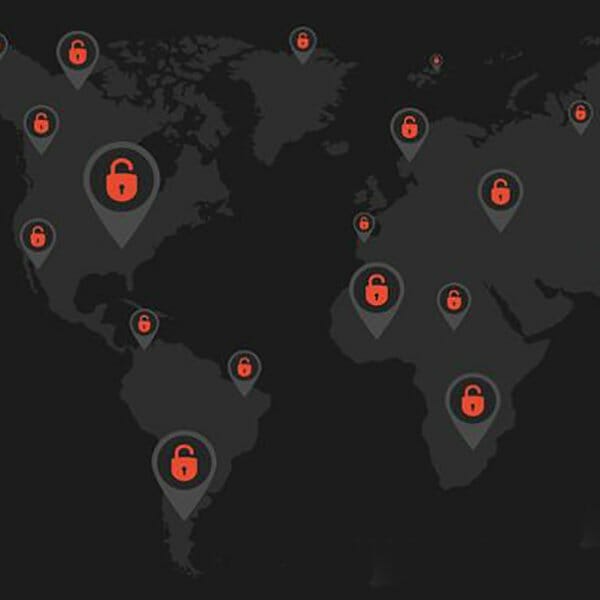
Technology has penetrated into all areas of our daily lives. The finance sector should be no exception. The industry is outdated, traditional methods seem to lack efficiency already and the powerful emergence of Fintech enterprises forces traditional banks to adopt a change of parading in the way they carry internal processes. Financial technology is starting to make the loan market a friendlier place with the applicant and the banks as well. Professionals in the sector have more efficient and advanced tools that ensure fast handle of daily tasks. Digital Intelligence is a technology showing immense potential in changing the loan market to its core.
The artificial intelligence sector thrives in the context in which a growing number of enterprises are interested in leveraging this sort of technology to optimise their internal flow and reduce resource waste. In banks’ case, AI seems to boost these institutions’ abilities to a whole new level that allows faster application processing timespans and facile elimination of redundant tasks from employee’s daily activity demands. But let’s see how is are banks leveraging AI in the digital age.
AI is Helping Banks Fight Financial Fraud
Traditionally, financial fraud is an inherent struggle in the banking sector. By leveraging technology, artificial intelligence, more exactly, banks grow aware of potential threats aiming banks or their clients. In 2017, the AI finance market value reached $2.5 billion.
By 2024, the market is expected to grow by 30% according to a Global Market Insights research. Fraud and scam transactions generated in the US banking sector $2.2 billion loss, only in 2016. In the UK, fraud also generated $446 loss in the banking sector, in the first half of 2017. And the statistics might have been gloomier than this if some banking institutions’ defence plan wasn’t strong enough. According to a study, the industry prevented more than $950 million worth of fraud losses during the same interval.
Is there something that can be done to prevent fraud easier in the future? While this is an inherent risk of the banking sector, AI might help financial players secure their place in a market where fraud is less likely to occur.
Different tech players develop fraud prevention software systems. However, banks themselves integrate into their internal processes AI capabilities which helps them identify unusual activity and prevent fraud before taking place. Powered by machine learning and algorithms, as well as real-time pattern recognition capabilities, this technology allows banking institutions to deal with fraud attempts in a fast and efficient fashion.
Late-generation fraud management software systems are able to discern between fraudulent activity and legitimate transactions in a matter of seconds. This way, clients are also protected from being wrongfully flagged as fraudsters.
Machine Learning and Process Optimization
While proving itself a powerful tool in fraud prevention, Machine Learning and AI are also helping employees in the banking sector save time on redundant, dull and boring tasks. JP Morgan, one of the most prolific banks in the US, is well aware of this technology’s capabilities and in 2017, the bank implemented a machine learning system called COIN. This particular system was designed to automate tasks that otherwise would have demanded manual processing. AI empowers COIN to automate tasks that are otherwise boring and repetitive: loan agreement reviews and more. When manual labour is demanded in similar tasks, it’s approximated that they would eat up approximately 360,000 hours on a yearly basis. COIN, the system implemented at JP Morgan is now able to tackle this task in a matter of seconds.
As humans are prone to make mistakes because of a series of factors, COIN is also able to eliminate human error efficiently and reduce mistakes in loan interpretation. For the future, JP Morgan plans to extend the use of similar technologies to automate other tasks as well (credit default swaps or custody agreement).
Although people seem to worry about job stability in the future, when faced with AI adoption and implementation in the banking sector, big voices in the industry tend to disagree. According to the specialists at LoanStar US, bank employees will start working on higher-value tasks, as opposed to redundant ones that can be easily automated by using Machine Learning and Artificial Intelligence. Professionals in the industry also seem to agree with this point of view. According to most of them, their careers will advance more and the work-life balance will be achievable with deeper integration of AI and ML.
Virtual Customer Service Assistants
The financial sector is heavily reliant already on Artificial Intelligence. In improving customer support and counselling services, banks and different comparison platforms have integrated with their websites smart tools that promise to deliver high-quality assistance to all clients in need. By comprising big data and machine learning, as well as artificial intelligence, different systems used by banks and comparison platforms facilitate communication between institutions and customers. These systems are currently able to deliver insightful information on different topics and questions, make recommendations and more.
More Accurate Credit Scoring in the Digital Age
Credit scoring is inherently based on technology. Traditionally, automated systems are used by financial institutions to decide if a loan application is enjoying enough solvency guarantees. But still, artificial intelligence is due to facilitate furthermore the ease of use and accuracy of these systems used to assess creditworthiness. When combined, big data and algorithms allow accurate assessment, even if the applicant doesn’t have an extended credit history to back their healthy financial habits.
Digital technology, artificial intelligence, big data and machine learning are more than pompous words used in the tech sector. They are technologies backed by plenty of proof when it comes to their efficiency and accuracy. In a world where everything seems to revolve around those, banks have to keep up with the tends and eliminate traditional protocols and methods in favour of late technologies.
This is an article provided by our partners network. It might not necessarily reflect the views or opinions of our editorial team and management.
Contributed content

Founder Dinis Guarda
IntelligentHQ Your New Business Network.
IntelligentHQ is a Business network and an expert source for finance, capital markets and intelligence for thousands of global business professionals, startups, and companies.
We exist at the point of intersection between technology, social media, finance and innovation.
IntelligentHQ leverages innovation and scale of social digital technology, analytics, news, and distribution to create an unparalleled, full digital medium and social business networks spectrum.
IntelligentHQ is working hard, to become a trusted, and indispensable source of business news and analytics, within financial services and its associated supply chains and ecosystems






























